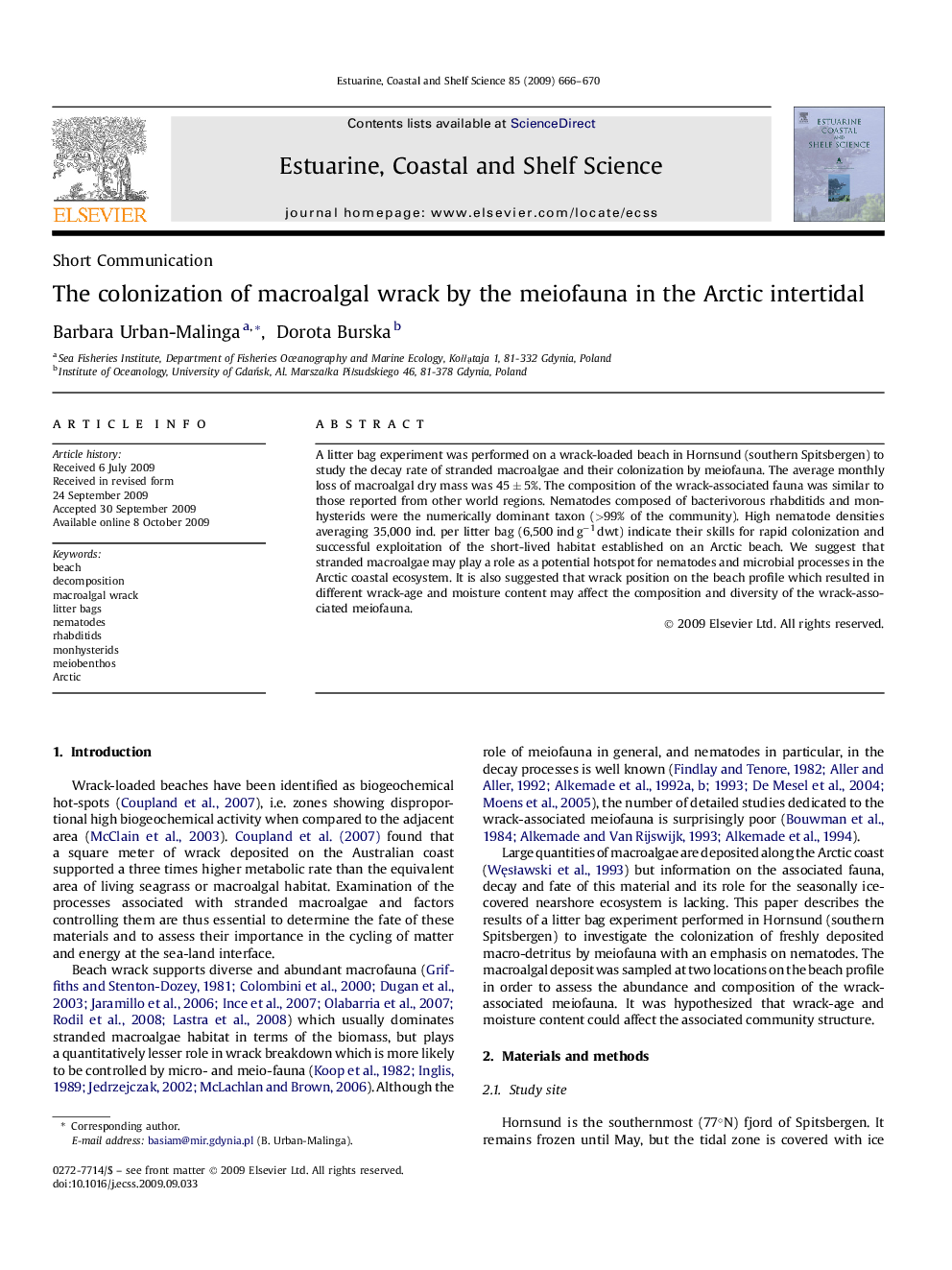| Article ID | Journal | Published Year | Pages | File Type |
|---|---|---|---|---|
| 4541289 | Estuarine, Coastal and Shelf Science | 2009 | 5 Pages |
Abstract
A litter bag experiment was performed on a wrack-loaded beach in Hornsund (southern Spitsbergen) to study the decay rate of stranded macroalgae and their colonization by meiofauna. The average monthly loss of macroalgal dry mass was 45 ± 5%. The composition of the wrack-associated fauna was similar to those reported from other world regions. Nematodes composed of bacterivorous rhabditids and monhysterids were the numerically dominant taxon (>99% of the community). High nematode densities averaging 35,000 ind. per litter bag (6,500 ind gâ1 dwt) indicate their skills for rapid colonization and successful exploitation of the short-lived habitat established on an Arctic beach. We suggest that stranded macroalgae may play a role as a potential hotspot for nematodes and microbial processes in the Arctic coastal ecosystem. It is also suggested that wrack position on the beach profile which resulted in different wrack-age and moisture content may affect the composition and diversity of the wrack-associated meiofauna.
Related Topics
Physical Sciences and Engineering
Earth and Planetary Sciences
Geology
Authors
Barbara Urban-Malinga, Dorota Burska,
